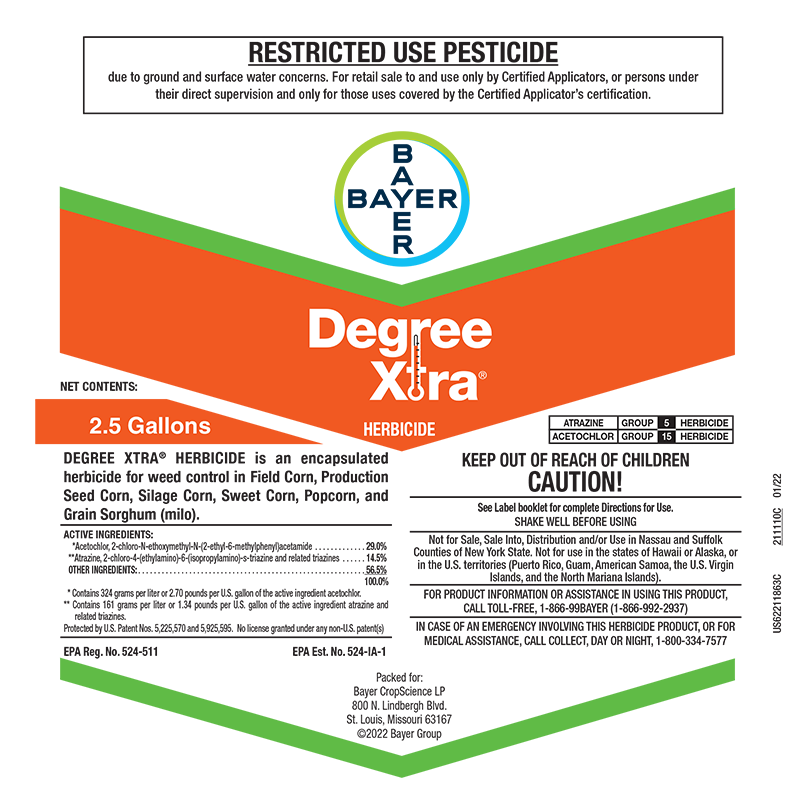Degree Xtra Herbicide
HerbicideDegree Xtra® herbicide is a premix that contains acetochlor and atrazine. As soil temperatures rise, the patented micro-encapsulation technology in Degree Xtra delivers an immediate dose of atrazine with a slow release of acetochlor for just the right amount of weed control. The process allows for increased crop safety and longer-lasting residual control of a wide range of key grass and broadleaf weeds.
Approved In
AL, AR, CO, CT, DC, DE, GA, IA, ID, IL, IN, KS, KY, LA, MD, MI, MN, MO, MS, MT, NC, ND, NE, NJ, NM, NV, NY, OH, OK, OR, PA, RI, SC, SD, TN, TX, UT, VA, VT, WI, WV, WY
Labels / Safety Data Sheets (MSDS)
DEGREE XTRA HERBICIDE Label
DEGREE XTRA HERBICIDE MSDS - English
DEGREE XTRA HERBICIDE MSDS - Spanish
Effective Against
Our portfolio has products to fight a variety of weeds, pests and diseases.
Barnyard Grass
Cocklebur
Common Ragweed
Common Waterhemp
Foxtail Species
Lambsquarters
Registered Crops
Our products are available for use on a variety of different crops.
checkcorn field
checkcorn production seed
checkcorn sweet
checkgrain sorghum
checkpopcorn
checksilage corn
